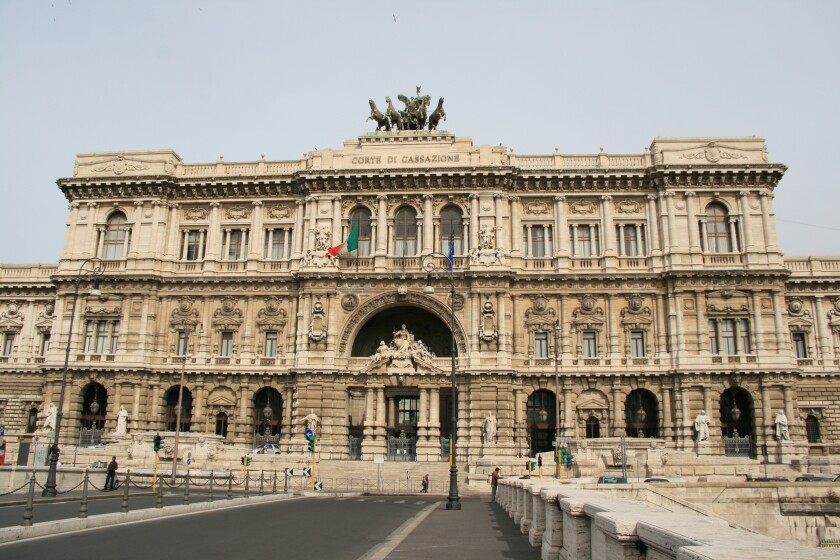In the application of transfer pricing regulations, the definition of associated enterprises is particularly relevant, as it serves to identify situations in which the requirement of control may be deemed to exist.
This topic has been the subject of debate in recent years, with two opposing views emerging:
The application of transfer pricing rules solely in cases of legal control of one company over another (or both entities being controlled by a third party); and
The application of transfer pricing rules in cases of legal control and situations where economic control of one company over another could be asserted.
Circular No. 32/1980 guidance
Italian Circular No. 32/1980 already excluded the notion that the concept of “control” referred to in Article 110 of the Consolidated Text of Income Taxes (Testo Unico delle Imposte sui Redditi) was to be understood exclusively within the limits of Article 2359 of the Civil Code, stating instead that it encompasses any instance of actual or potential economic influence, deducible from specific circumstances.
It is worth noting that, under the provisions of Article 2359 of the Civil Code, control relationships are identified in the following cases:
A company in which another company holds the majority of the voting rights exercisable at the shareholders’ meeting (paragraph 1, point 1);
A company in which another company holds sufficient voting rights to exercise a dominant influence at the shareholders’ meeting (paragraph 1, point 2); and
A company over which another company exercises significant influence (paragraph 1, point 3) by virtue of specific contractual ties.
According to the position expressed in Circular No. 32/1980, control is defined not only by legal or formal prerequisites but also by de facto situations.
This refers to connections arising from the economic influence of one company over the “entrepreneurial” decisions of another, allowing for the manipulation of transfer prices.
Circular No. 32/1980 lists a series of conditions in which actual or potential economic influence may give rise to control situations:
Exclusive sale of products manufactured by the other enterprise;
The company’s inability to operate without the capital, products, or technical cooperation of the other enterprise (including joint ventures);
The right to appoint members of the board of directors or executive bodies of the company;
Shared members of the board of directors;
Family relationships between the parties;
Granting of substantial loans or significant financial dependence;
Participation by the companies in joint procurement or sales centres;
Participation by the companies in cartels or consortia, particularly those aimed at price fixing;
Control over sources of supply or market outlets;
A series of contracts creating a monopolistic situation; and
In general, any situation in which actual or potential influence is exercised over business decisions.
This broader interpretation has also been frequently endorsed by the Italian Supreme Court (see, for instance, judgment No. 8130 of April 22 2016, order No. 11053 of April 27 2021, and order No. 3263 of February 2 2022), which has supported the view that, in the application of transfer pricing rules, the concept of corporate control should be interpreted more broadly than under civil law.
Ministerial decree defines key concepts
The Ministerial Decree of May 14 2018, in line with Circular No. 32/1980, states that the term “associated enterprises” refers to the resident enterprise and the non-resident enterprise(s) in cases where:
One of them participates, directly or indirectly, in the management, control, or capital of the other; or
The same entity participates, directly or indirectly, in the management, control, or capital of both enterprises.
Participation in management, control, or capital is understood to mean:
Holding more than 50% of the capital, voting rights, or profit rights of another enterprise; or
Exercising dominant influence over the management of another enterprise, based on shareholding or contractual ties.
Italian Supreme Court considers the concept of control in new ruling
With judgment No. 18058 of July 3 2025, the Italian Supreme Court once again addressed the concept of control with regard to transfer pricing regulations.
Firstly, the Supreme Court clarified that, for the purposes of applying the transfer pricing rules, the concept of control as defined by the Ministerial Decree of May 14 2018 – which refers to a participation of more than 50% in the capital, voting rights, or profits, or to the exercise of a dominant influence over the management of another enterprise based on shareholding or contractual ties – does not have retroactive effect.
Therefore, with reference to the 2015 tax year, the existence of a control relationship must be assessed according to the previous criterion of stable economic influence.
In the case at hand, the court confirmed the ruling of the lower court, which held that the presence of two common directors between the Italian company and the foreign company did not constitute a stable economic influence – distinct from, and in addition to, mere group affiliation – relevant for the application of transfer pricing regulations.
In particular, the appellate judges:
Held that the presence of two common directors between the two companies was not accompanied by any concrete managerial actions that would indicate the economic subordination of one company to the other;
Noted that the distributing company was not exclusively or predominantly engaged in distributing the products of the affiliated company; and
In response to the claim regarding the failure to enforce contractual remedies (such as termination) for breaches related to minimum supply obligations and the communication of sales data, observed that the tax office did not challenge the opposing party’s argument that such failures were due to the insufficient production capacity of the manufacturing company, which had incurred significant set-up costs that would justify its negative financial results.













